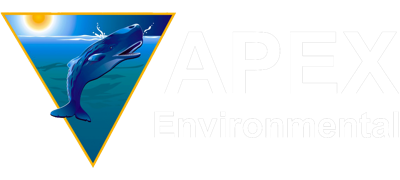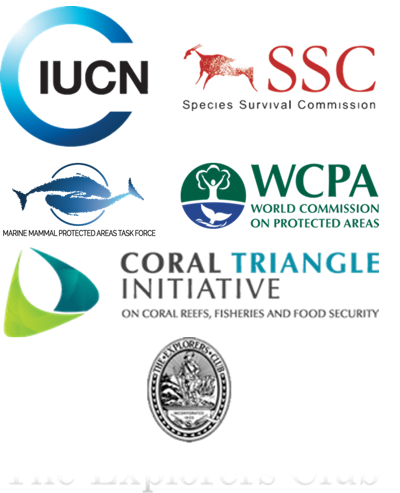Blue whales of the Savu Sea, Indonesia
The Savu Sea is positioned in eastern Indonesia, at the nexus of two oceans and includes marine migratory corridors as well as upwelling zones of regional importance within the Indo-Pacific.
Its main passage, Ombai Strait, is a transboundary passage between Indonesia and Timor Leste (East Timor).
An extensive multi-year visual and acoustic survey and research program has been conducted in the Solor-Alor island region, to investigate the Savu Sea’s ecological significance for large oceanic cetaceans such as blue, Bryde’s and sperm whales and to assess the sustainability of a traditional sperm whale fishery in Lamalera, Lembata Isl.
This program has identified the Solor-Alor island region as one of the most important habitats for oceanic cetaceans in the Indonesian Seas, as characterized by:
• Exceptional cetacean species and habitat diversity (deep-sea yet near-shore).
• Consistent distribution of large cetaceans (blue and sperm whales), relatively close to shore.
• Relatively high abundance of blue whales (for Indonesian waters).
• High degree of cetacean species interactions (mixed schools and predator-prey activities including orca-sperm whale attack).
• Important and/or critical habitats for multiple cetacean species (marine corridors like Ombai Strait between Alor and East Timor; major seasonal upwelling zones).
• Intense fisheries pressures – sperm and baleen whales are target species for the traditional whaling communities; modern fisheries activities have a high potential for cetacean by-catch.
• Significant potential and government interest to develop whale watching. In May-July 2005, two archival satellite tags (pop-up tags) were successfully deployed on sperm and blue whales, a first for Indonesia and possibly SE Asia.
The tags were programmed to included oceanographically and behavioural (dive) data and provided for an ecological time series of 42 days and 60 days respectively.
The blue whale’s pop-up tag transmitted on July 1, 2005 at 7.3 S lat, 130.4 E long and approx. 685 km minimal distance (straight line) from its initial position.
The blue whale’s overall path was in a general ENE direction and passed Alor, Ombai Strait, East Timor, Wetar, Bar Bar and Yamdela Island groups and ended in the SE Banda Sea.
The blue whale dive results show:
1. A strong change in dive depth frequencies during daytime vs. nighttime hours (distinct diel patterns in diving behaviour, with the blue whale diving relatively frequently over 200m in the daytime).
2. Significant temperature changes at depth, indicative of dives though thermoclines from 290 C – 130 C between 0m – 265m depth (the oceanography of the area is strongly influenced by the Indonesian Flowtrough).
The depths recorded (max. 265m) correspond closely to depth ranges preferred for foraging by blue whales as reported for several other regions in the world.
The frequent occurrence of deep dives (>200m) during daytime hours also indicates that the tagged blue whale was foraging in the Savu and Banda Seas.
Furthermore periods of presumed foraging were followed with long periods of shallow dives with maximum depths at or near the surface (0-50m), presumably to locate and approach other local habitats with high prey concentrations or engage in migratory behaviour.
According to this particular individual, blue whales may spend at least several months per year roaming throughout the eastern Indonesian Seas.
This assumes that the tagged whale did not make large-scale N-S movements during the deployment – transmission period, which is supported by the environmental data.
The high proportion of time spend at or near the surface during night-time hours by this blue whale does imply an increased vulnerability to fisheries interactions such as net entanglements.
Off-shore gillnets, a common fishing method throughout Indonesia, are of particular concern, as are long-lines.
The destructive yet common fishing practice of reef bombing is a major threat in Indonesian waters.
Acoustic habitat degradation is likely to occur as frequent reef bombing near straits may deter whales from entering migratory passages or defer foraging.
Direct impacts of blast can not be ruled out, especially for whales sighted within close range (50-500m) of the coral-fringed coasts.
All threats from local and commercial fisheries need to be further investigated and quantified. In addition, ship strikes are an unknown, yet possibly significant threat to blue whales.
The Savu Sea research area includes two of the major shipping channels for international shipping between all nations of the W and S Indian Ocean to Asia (incl. oil and gas tankers and bulk carriers).
These sea lanes overlap with several of the primary migratory corridors for large cetaceans that have been identified in Indonesian waters thus far.
A large-scale Marine Protected Area is under development for the Savu Sea seascape, with the primary aim to better manage these rapidly increasing pressures on cetaceans and other large marine life, and safeguard their associated habitats.
Such a management framework would also be needed to develop responsible whale watching activities in this remote region.
Importantly, the initiative will boost the representation of ‘deep-sea yet near shore’ habitats in Indonesia’s MPA networks.
This conservation approach may be relevant as a model for the migratory passages in Papua New Guinea and the Solomon Islands, which are both large archipelagic nations with a high diversity of cetaceans.
It seems likely that at least part of the blue whale population within Indonesian waters migrate to/from Western Australia and beyond.
Continued photo-identification matching programs, satellite telemetry and genetic studies may well shed light on this possibility, and also address other ecological aspects of this poorly known species.




